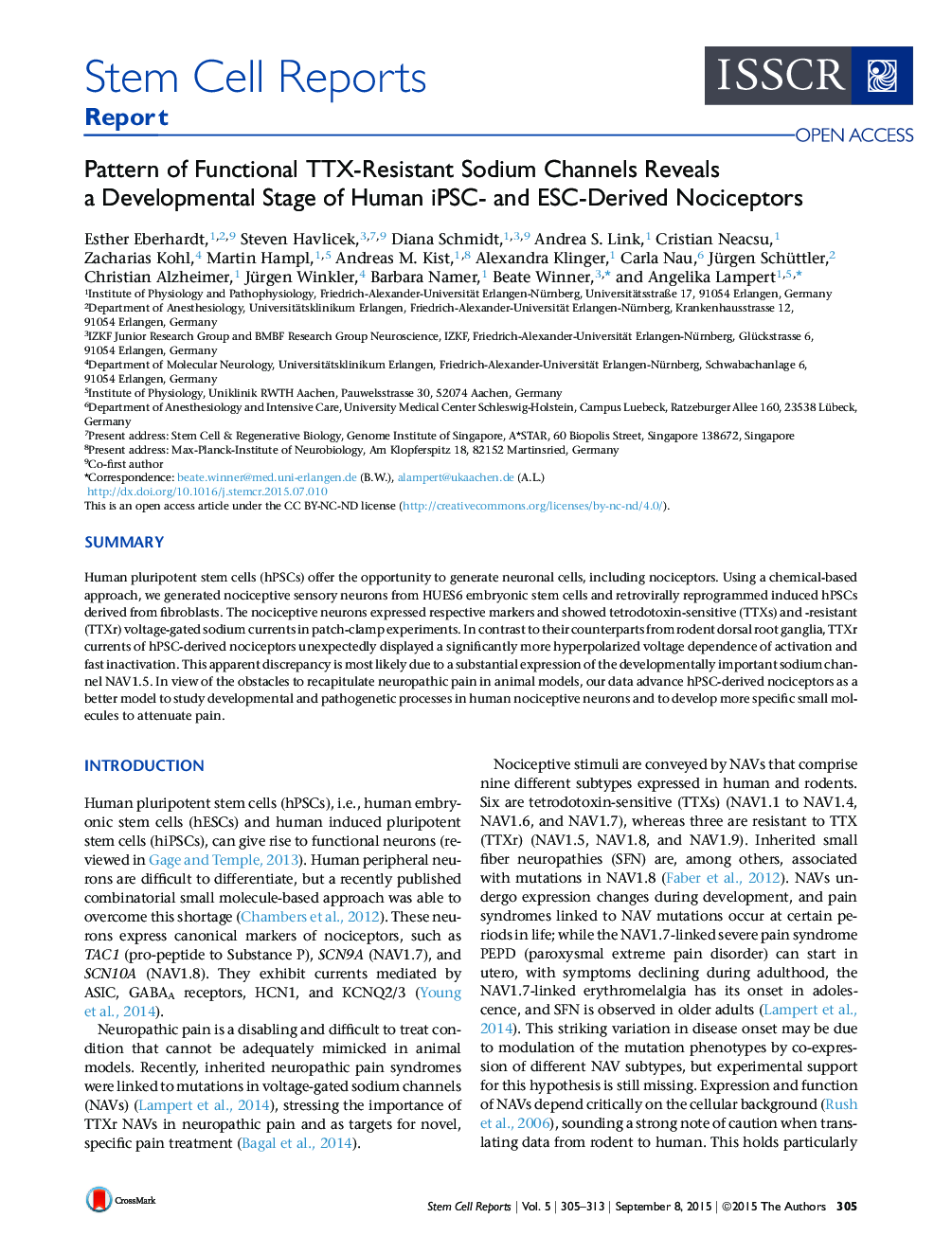| Article ID | Journal | Published Year | Pages | File Type |
|---|---|---|---|---|
| 2093400 | Stem Cell Reports | 2015 | 9 Pages |
•hPSC-derived nociceptors express TTX-resistant sodium channels NAV1.8 and NAV1.9•SCN5A mRNA, coding for NAV1.5, is present in hPSC-derived nociceptors•The biophysical Nav characteristics support strong functional expression of NAV1.5•Human hPSC-derived nociceptors offer a suitable model of developing sensory neurons
SummaryHuman pluripotent stem cells (hPSCs) offer the opportunity to generate neuronal cells, including nociceptors. Using a chemical-based approach, we generated nociceptive sensory neurons from HUES6 embryonic stem cells and retrovirally reprogrammed induced hPSCs derived from fibroblasts. The nociceptive neurons expressed respective markers and showed tetrodotoxin-sensitive (TTXs) and -resistant (TTXr) voltage-gated sodium currents in patch-clamp experiments. In contrast to their counterparts from rodent dorsal root ganglia, TTXr currents of hPSC-derived nociceptors unexpectedly displayed a significantly more hyperpolarized voltage dependence of activation and fast inactivation. This apparent discrepancy is most likely due to a substantial expression of the developmentally important sodium channel NAV1.5. In view of the obstacles to recapitulate neuropathic pain in animal models, our data advance hPSC-derived nociceptors as a better model to study developmental and pathogenetic processes in human nociceptive neurons and to develop more specific small molecules to attenuate pain.
